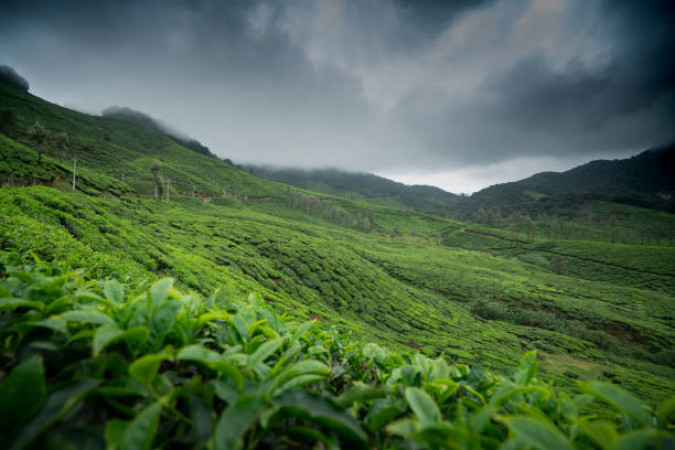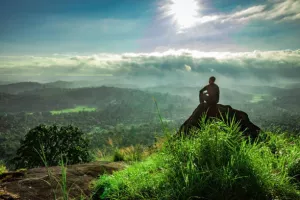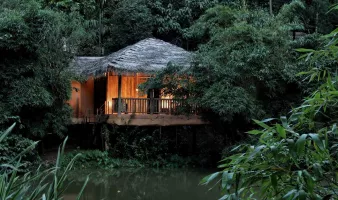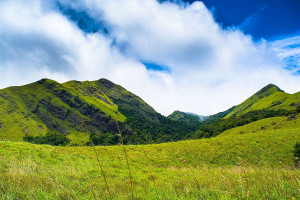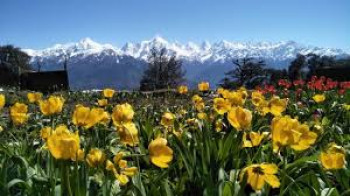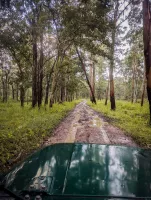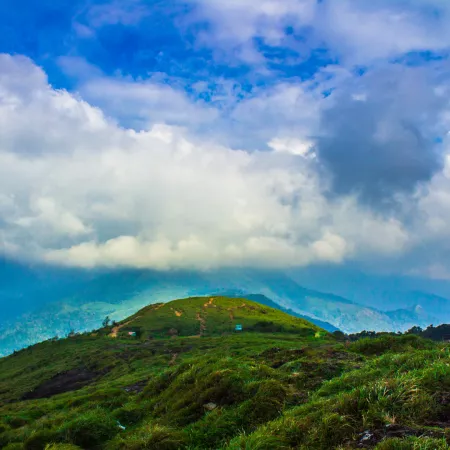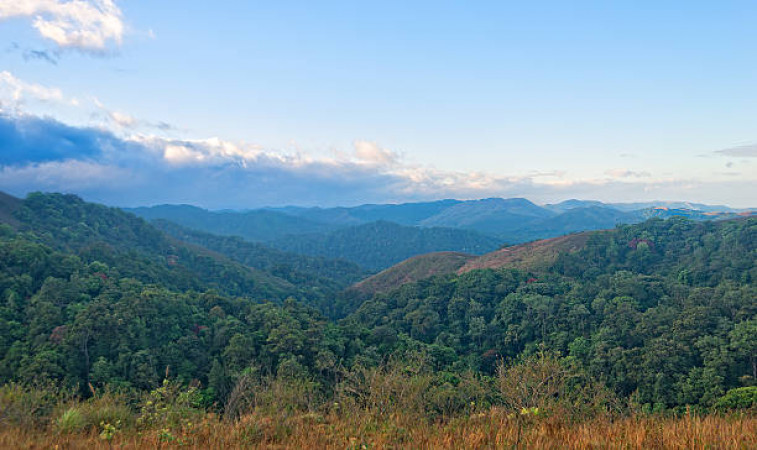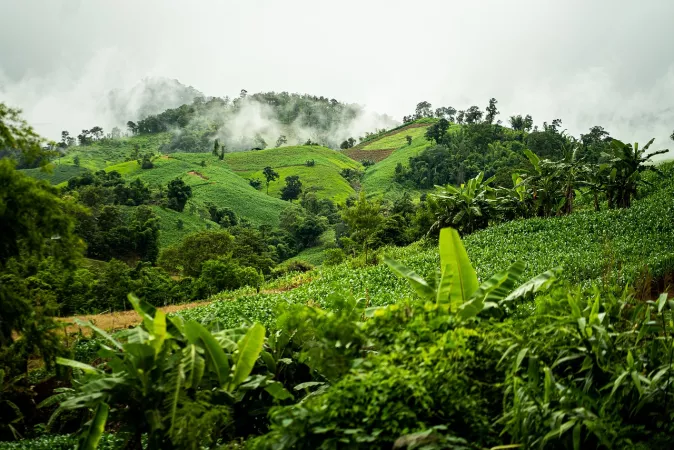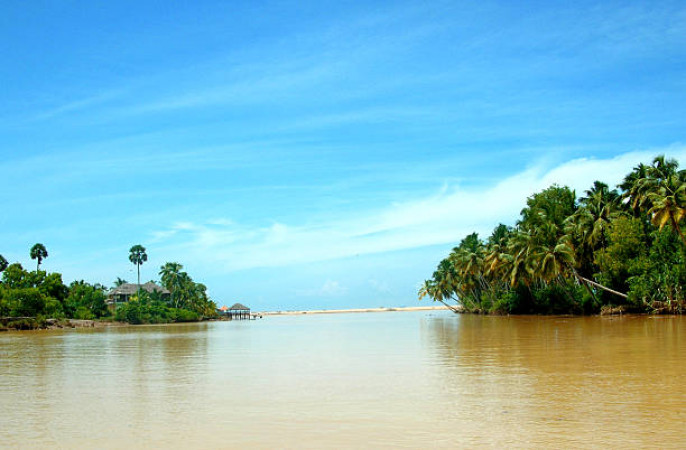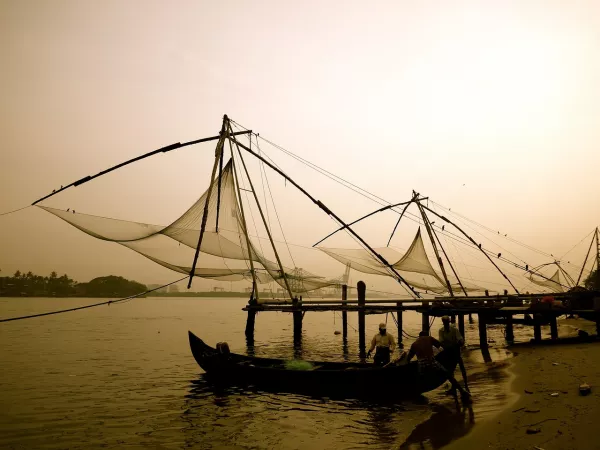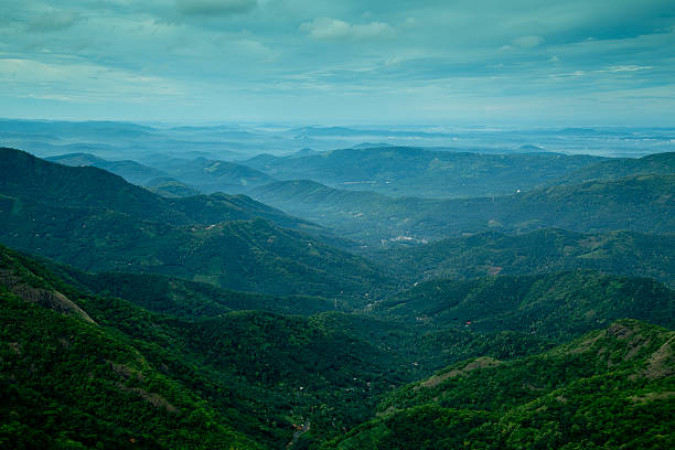Wayanad Travel Guide
Wayanad is a captivating destination nestled in the Western Ghats of Kerala, India. Known for its lush greenery, misty mountains, and rich biodiversity, Wayanad offers a perfect blend of nature and culture. The region boasts a fascinating history dating back to ancient times and is home to various indigenous tribes. Wayanad's serene landscapes and vibrant traditions make it a popular choice for nature lovers and adventure enthusiasts alike.Top Attractions in Wayanad
- Edakkal Caves
- Chembra Peak
- Banasura Sagar Dam
- Thirunelli Temple
- Wayanad Wildlife Sanctuary
Wayanad is Famous for
Nature enthusiasts flock to Wayanad for its pristine natural beauty and wildlife sanctuaries.Top Attractions in Wayanad
- Explore the ancient Edakkal Caves
- Trek to the heart-shaped Chembra Peak
- Boat ride at Banasura Sagar Dam
- Seek blessings at Thirunelli Temple
- Spot diverse wildlife at Wayanad Wildlife Sanctuary
What's Great about Travelling to Wayanad?
- Opportunity to immerse in nature's tranquility
- Perfect for adventure seekers and wildlife enthusiasts
- Rich cultural heritage and tribal experiences
What's Not So Great about Travelling to Wayanad?
- Limited connectivity and remote locations
- Monsoon season can lead to roadblocks and closures
- Some attractions may require physical fitness for access
Travel Tips for Wayanad
- Carry insect repellent for jungle treks
- Respect local customs and traditions
- Stay hydrated and carry snacks for long journeys
Important Wayanad trip information
- Ideal Duration: 3-5 days
- Best Time to Visit: October to May
- Nearby Airports and Railway Stations: Calicut International Airport and Kozhikode Railway Station
Top 10 Places to visit in Wayanad
Per Person
11,500
*EXCLUDING APPLICABLE TAXES 4.4 Ratings
( 489 Reviews )
( 489 Reviews )
Per Person
10,700
*EXCLUDING APPLICABLE TAXES 4.4 Ratings
( 489 Reviews )
( 489 Reviews )
Per Person
23,249
*EXCLUDING APPLICABLE TAXES 5.0 Ratings
( 393 Reviews )
( 393 Reviews )
Per Person
13,292
*EXCLUDING APPLICABLE TAXES 5.0 Ratings
( 393 Reviews )
( 393 Reviews )
Per Person
18,670
*EXCLUDING APPLICABLE TAXES 4.4 Ratings
( 314 Reviews )
( 314 Reviews )
Per Person
9,800
*EXCLUDING APPLICABLE TAXES 5.0 Ratings
( 151 Reviews )
( 151 Reviews )
FAQ's on Wayanad
Q1: What is the best time to visit Wayanad?
The best time to visit Wayanad is during the months of October to May when the weather is pleasant, and the region is lush green after the monsoon season. This period is ideal for outdoor activities, exploring nature, and visiting attractions without the heavy rainfall that occurs during the monsoon months.
Q2: Do I need a visa to travel to Wayanad?
As Wayanad is a district in the Indian state of Kerala, international tourists visiting Wayanad would need to obtain an Indian visa. Visitors are advised to check the specific visa requirements based on their nationality and duration of stay. It is recommended to apply for the visa well in advance of the planned travel dates.
Q3: What are the must-visit attractions in Wayanad?
Wayanad is known for its natural beauty and wildlife reserves. Some of the must-visit attractions include the Wayanad Wildlife Sanctuary, Chembra Peak, Edakkal Caves, Banasura Sagar Dam, and Pookode Lake. Visitors can also explore tea and spice plantations, trek through lush forests, and visit tribal villages to experience the local culture.
Q4: Is Wayanad a safe place to travel?
Wayanad is considered a safe destination for travelers. However, like any other place, it is advisable to take standard precautions regarding personal safety and belongings. Visitors should be cautious while trekking or engaging in outdoor activities and follow advice from local authorities regarding any specific safety concerns.
Q5: What is the local currency in Wayanad and can I use credit cards?
The local currency in Wayanad is the Indian Rupee (INR). While credit cards are accepted at hotels, larger shops, and restaurants in urban areas, it is advisable to carry cash when visiting rural or remote areas. ATMs are available in major towns for convenient access to cash.
Q6: What is the local cuisine like in Wayanad?
Wayanad offers a delicious range of traditional Kerala cuisine including appam, puttu, fish curry, and various vegetarian dishes like avial and olan. The region is also known for its use of spices and flavors. Travelers can savor authentic local meals at roadside eateries, homestays, and restaurants.
Q7: What transportation options are available in Wayanad?
Transportation options in Wayanad include buses, taxis, auto-rickshaws, and rental vehicles. Public buses connect major towns and attractions, while taxis and auto-rickshaws are convenient for shorter distances. Renting a car or hiring a driver is recommended for exploring the region at your own pace.
Q8: Are there any cultural norms or etiquette I should be aware of when visiting Wayanad?
Travelers visiting Wayanad should respect the local customs and traditions. It is advisable to dress modestly, especially when visiting religious sites or interacting with the local community. Removing footwear before entering homes or places of worship is a common practice. Additionally, asking for permission before taking photographs of locals is considered polite and respectful.
Q9: I am a travel agent. How can I buy travel leads of Wayanad?
Register yourself as a travel agent at agents.tripclap.com and then you can buy travel leads to Wayanad once your account is approved. For more details contact our support team at +91-8069186564 or support@tripclap.com
